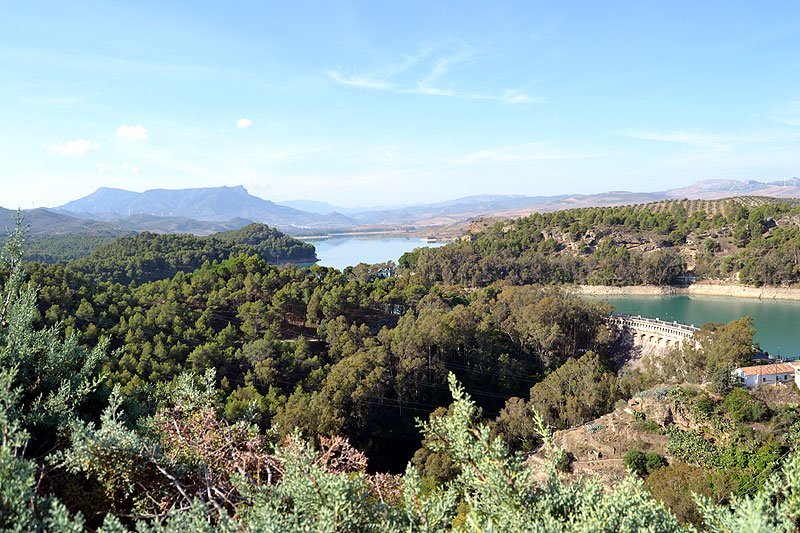Located in the Antequera region of Malaga, Spain, the Fuente de Piedra lagoon is the largest lagoon in Andalusia, stretching 6.5 km in length and 2.5 km in width. This wetland is particularly famous for being home to a large colony of Greater Flamingos, making it a significant site for the species in the Western Mediterranean.
The Tabernas Desert
The Tabernas Desert is located in the province of Almería, in the southeast of Andalucia. It is a semi-arid desert that covers an area of approximately 280 square kilometers (110 square miles). The landscape of the Tabernas Desert is characterized by its rugged terrain, barren hills, and dry riverbeds.
El Chorro Gorge and the Caminito del Rey
El Chorro Gorge and the Caminito del Rey, an impressive gorge formed by river erosion through the limestone mountain. In Spanish it is called El Desfiladero de los Gaitanes and is a well known natural attraction as the towering cliffs are around 200m high while only 10m wide at some points. The river below has been dammed, the Embalse Gaitanejo is one of the smaller reservoirs of five in this area. Alongside this reservoir sits the small village of El Chorro, built in the shadow of the mountain around the railway station.
Doñana National and Natural Parks
- Region: Andalucia
- Provinces: Sevilla, Huelva, Cadiz
- Declared a Natural Park: 1969 reclassified in 1978
- In1963 WWF and the Council of Scientific Research bought land (6,794ha) and set up a research station
- In 1994 it became a UNESCO World Heritage Site
- Natural Park surface area: 54,200
- National Park surface area: 50,720 hectares – Total area: 77,260ha:
- World Heritage and Special Bird Protection Areas: 50,720ha.
- National Park and Ramsar site; buffer zone 26,540ha.
Towns and Villages
- Huelva: Almonte, El Rocio, Hinojos, Bollullos Par del Condado, Rociana del Condado, Bonanes y Lucena del Puerto, Palos de la Frontera, Moguer, La Puebla del Río and the Isla Mayor
- Sevilla: Aznalcázar, Pilas y Villamanrique de la Condesa.
- Cádiz: Sanlúcar de Barrameda
Points of interest
The Doñana National and Natural Parks occupy the northern area of the Guadalquivir river where it meets the Atlantic Ocean. Six thousand years ago it would have been a wide estuary, but this has mostly been closed off by a long, natural sand bar. This in turn created a large saline lake which gradually collected silt leaving a huge wetland area with lagoons, marshlands and semi-permanent sand dunes.



